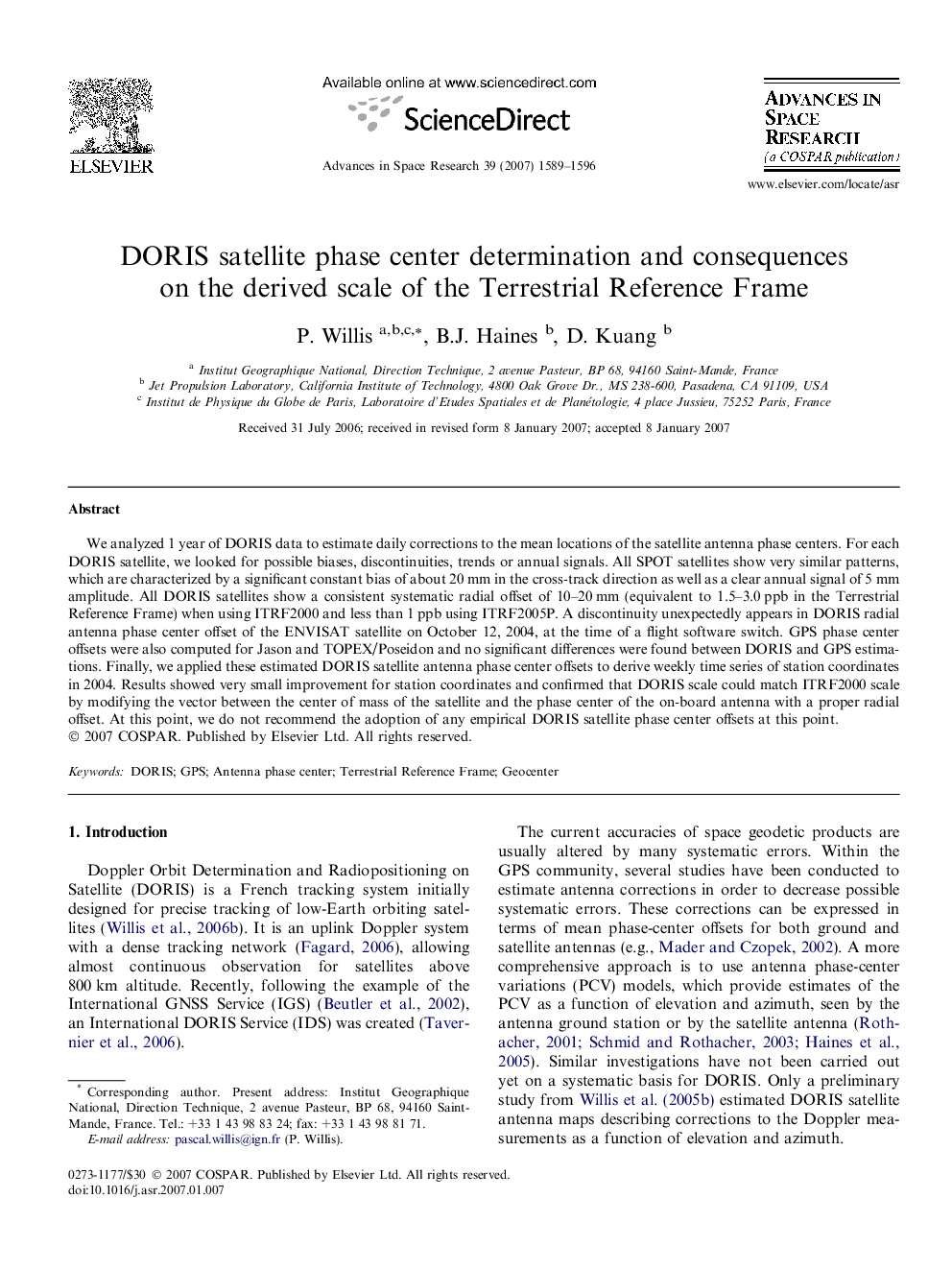| Article ID | Journal | Published Year | Pages | File Type |
|---|---|---|---|---|
| 1768901 | Advances in Space Research | 2007 | 8 Pages |
Abstract
We analyzed 1 year of DORIS data to estimate daily corrections to the mean locations of the satellite antenna phase centers. For each DORIS satellite, we looked for possible biases, discontinuities, trends or annual signals. All SPOT satellites show very similar patterns, which are characterized by a significant constant bias of about 20Â mm in the cross-track direction as well as a clear annual signal of 5Â mm amplitude. All DORIS satellites show a consistent systematic radial offset of 10-20Â mm (equivalent to 1.5-3.0Â ppb in the Terrestrial Reference Frame) when using ITRF2000 and less than 1Â ppb using ITRF2005P. A discontinuity unexpectedly appears in DORIS radial antenna phase center offset of the ENVISAT satellite on October 12, 2004, at the time of a flight software switch. GPS phase center offsets were also computed for Jason and TOPEX/Poseidon and no significant differences were found between DORIS and GPS estimations. Finally, we applied these estimated DORIS satellite antenna phase center offsets to derive weekly time series of station coordinates in 2004. Results showed very small improvement for station coordinates and confirmed that DORIS scale could match ITRF2000 scale by modifying the vector between the center of mass of the satellite and the phase center of the on-board antenna with a proper radial offset. At this point, we do not recommend the adoption of any empirical DORIS satellite phase center offsets at this point.
Related Topics
Physical Sciences and Engineering
Earth and Planetary Sciences
Space and Planetary Science
Authors
P. Willis, B.J. Haines, D. Kuang,
